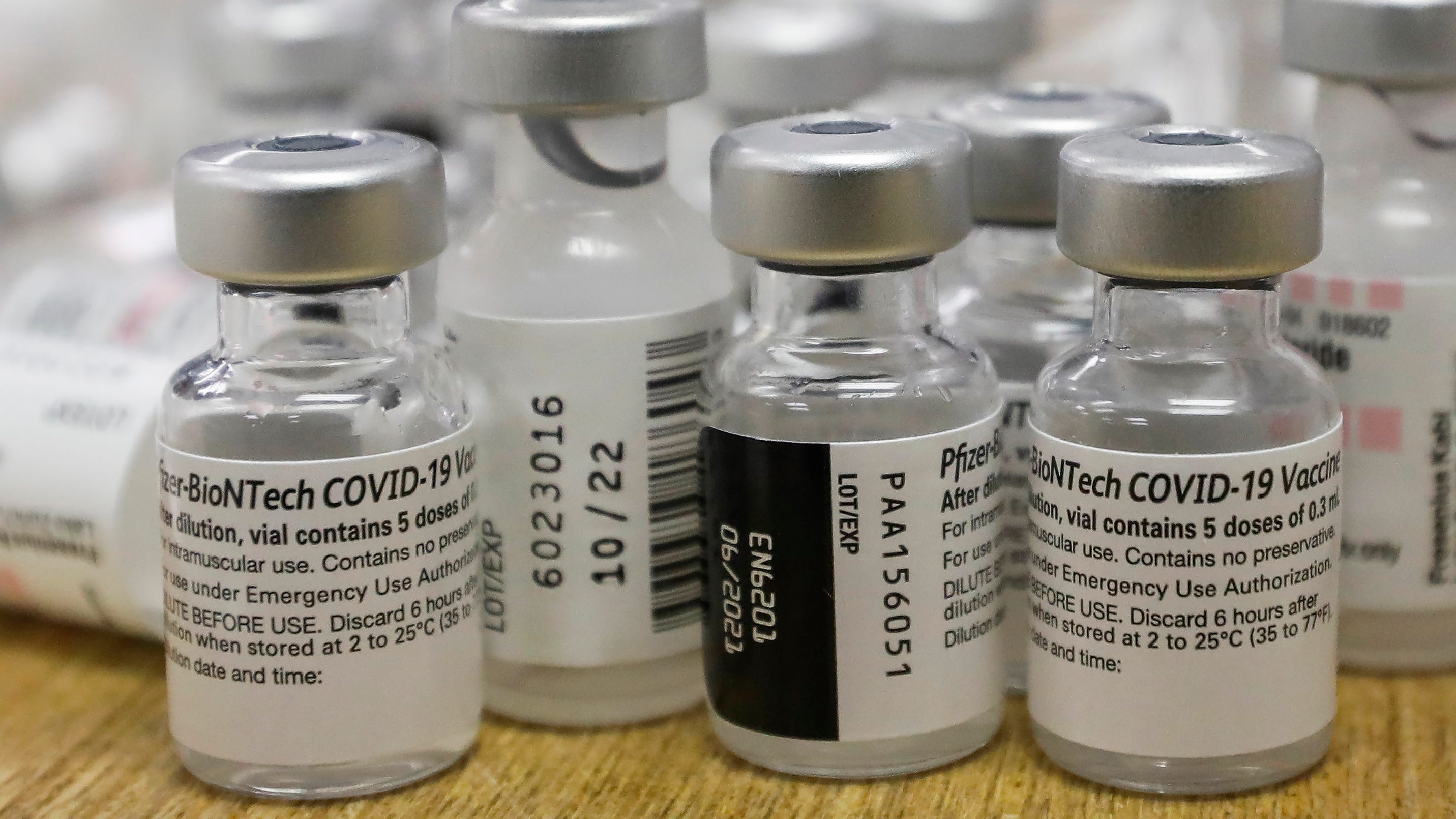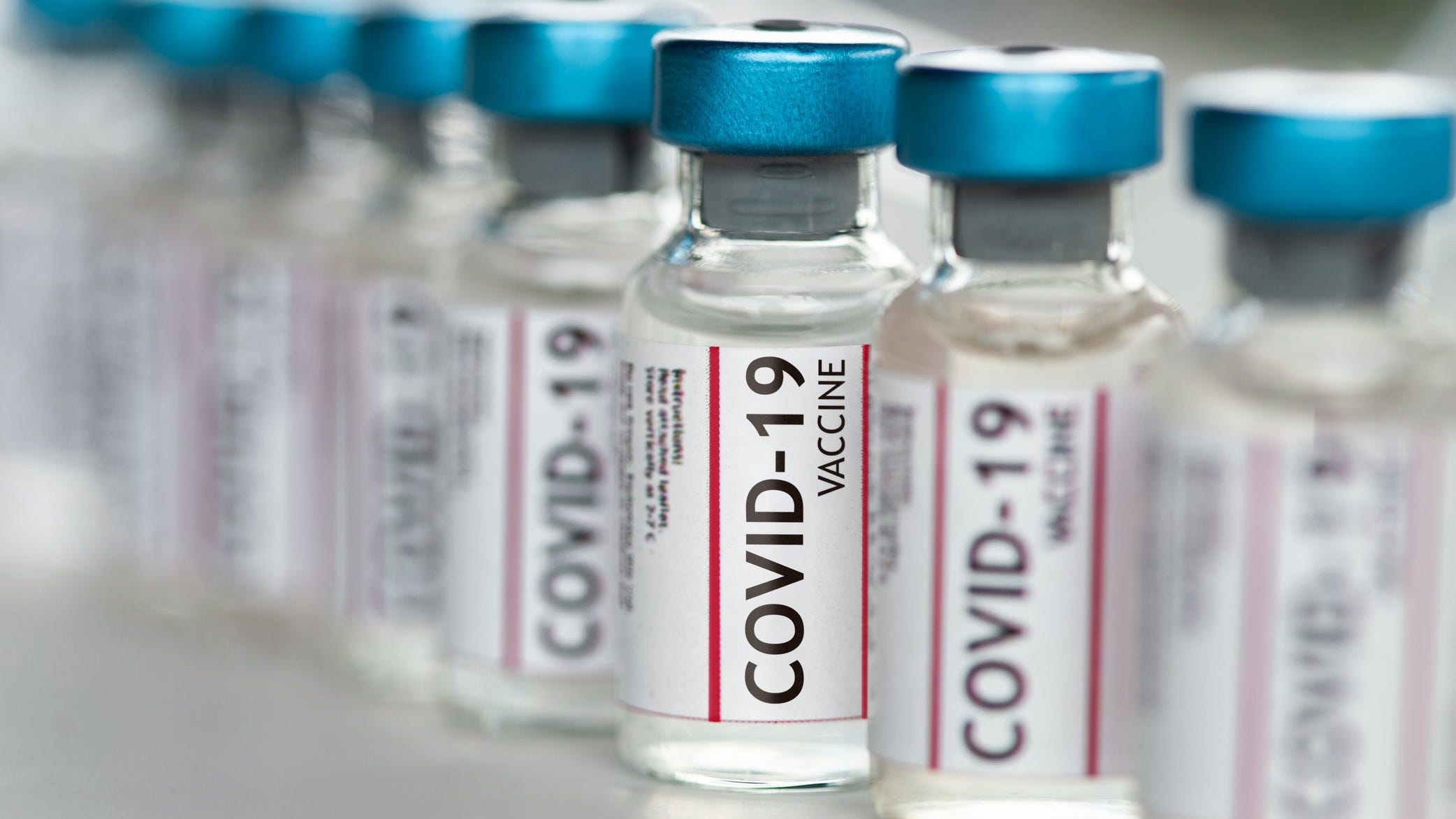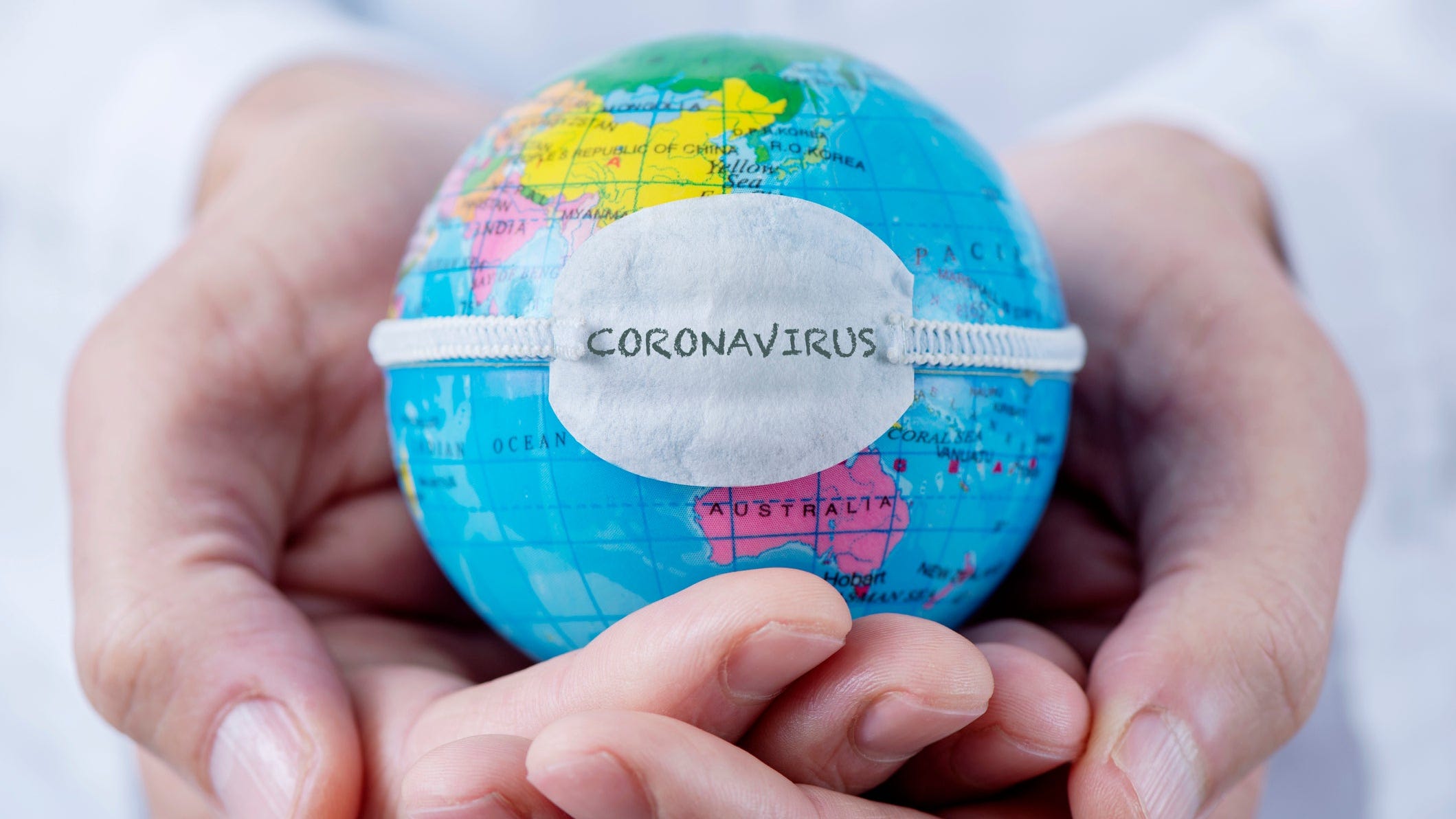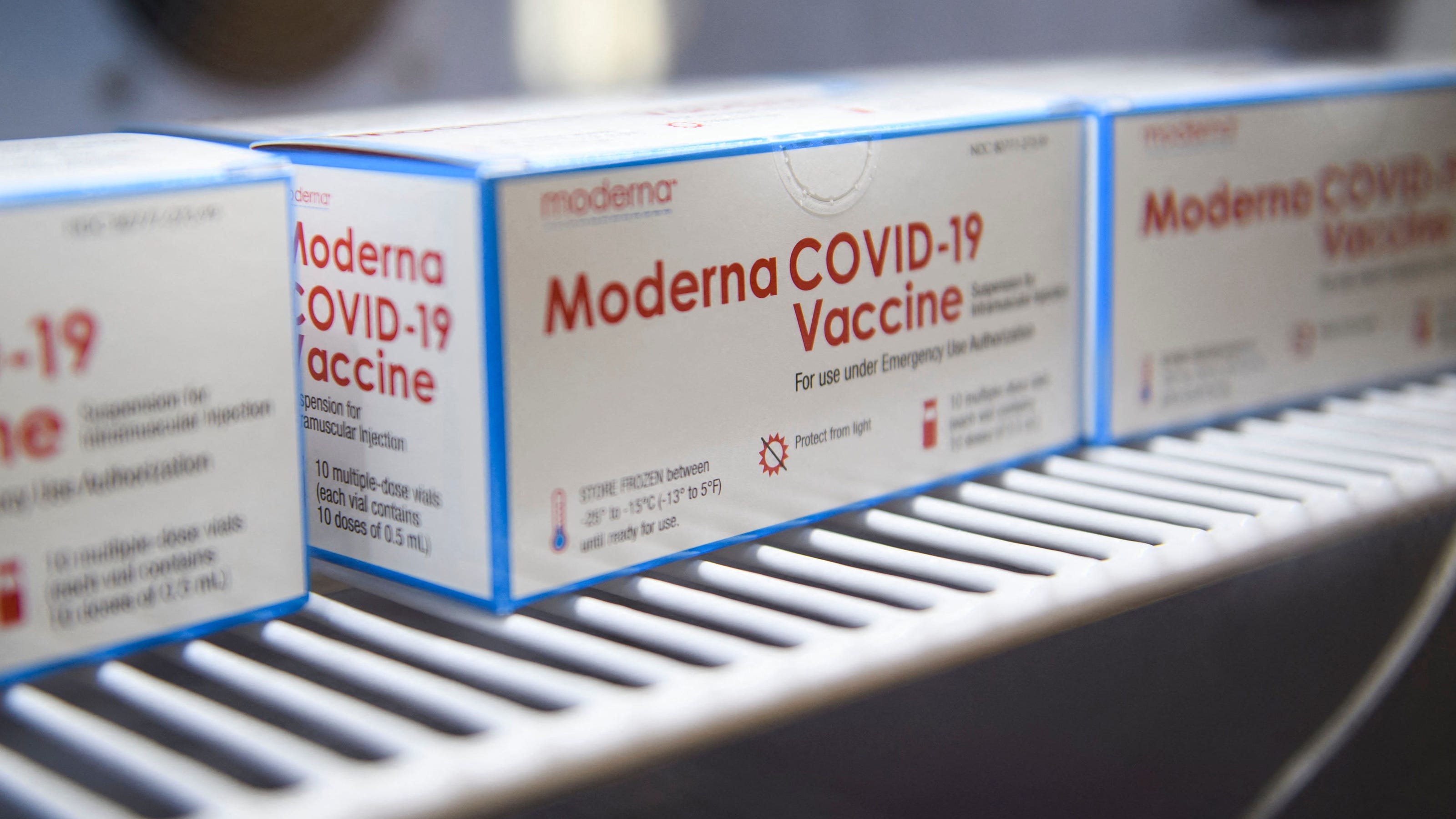Navigating The COVID-19 Pandemic In 2025: A Comprehensive Guide To Prevention, Vaccination, And Treatment
Navigating the COVID-19 pandemic in 2025 may not be easy, but it will be necessary. The virus is still circulating, and new variants are emerging all the time. So it's important to stay up-to-date on the latest information about the virus and the best ways to protect yourself, your family, and your community. This guide will provide you with the information you need to make informed decisions about your health and well-being during the pandemic.
Editor's Notes: "Navigating The COVID-19 Pandemic In 2025: A Comprehensive Guide To Prevention, Vaccination, And Treatment" have published today date.

Pfizer COVID-19 vaccine available at Mercy and Cox for teens 12 and up - Source www.usatoday.com
We've done some analysis, dug into the information, and put together this Navigating The COVID-19 Pandemic In 2025: A Comprehensive Guide To Prevention, Vaccination, And Treatment guide to help you make the right decision. We hope this guide will be a valuable resource for you as you navigate the COVID-19 pandemic in 2025.
| Prevention | Vaccination | Treatment |
|---|---|---|
| - Wear a mask in public places - Wash your hands frequently - Avoid crowds - Get tested if you have symptoms |
- Get vaccinated as soon as you are eligible - Boosters are recommended for everyone - Vaccines are safe and effective |
- Antiviral medications can help reduce the severity of symptoms - Monoclonal antibodies can help prevent serious illness - Hospitalization may be necessary for severe cases |
- Prevention
- Vaccination
- Treatment
FAQ
This comprehensive FAQ section addresses common concerns and misconceptions surrounding the COVID-19 pandemic in 2025, providing evidence-based guidance for prevention, vaccination, and treatment.
Question 1: Is it still necessary to wear face masks in public spaces?
Yes, wearing face masks remains an effective measure for reducing the spread of COVID-19 in public settings. The virus primarily transmits through respiratory droplets, and masks act as a physical barrier, minimizing the release and inhalation of infectious particles.

Fact check: Coronavirus vaccines do not contain luciferase enzymes - Source www.usatoday.com
Question 2: How often should I receive COVID-19 booster shots?
The recommended frequency of COVID-19 booster shots depends on individual risk factors and the emergence of new variants. Generally, annual booster shots are advised for most individuals to maintain high levels of immunity. However, immunocompromised individuals or those in high-risk environments may require more frequent boosters.
Question 3: Are there any new developments in COVID-19 treatment?
Yes, ongoing research has led to advancements in COVID-19 treatment. New antiviral medications, such as Paxlovid and Molnupiravir, have demonstrated effectiveness in reducing hospitalization and mortality rates, particularly when administered early in the course of infection. Additionally, monoclonal antibody therapies continue to play a role in treating severe COVID-19 cases.
Question 4: Are COVID-19 vaccines safe for pregnant women and children?
Yes, COVID-19 vaccines are considered safe for both pregnant women and children. Extensive clinical trials have shown that the vaccines do not pose any significant risks to these populations. In fact, vaccination is strongly recommended for pregnant women and children to protect them from severe COVID-19 complications.
Question 5: What are the long-term effects of COVID-19 infection?
While most individuals recover fully from COVID-19, some may experience persistent symptoms known as long COVID. These symptoms can include fatigue, brain fog, shortness of breath, and muscle aches. Long COVID is still being studied, and its long-term effects are not yet fully understood.
Question 6: Is it possible to become reinfected with COVID-19 after vaccination?
While COVID-19 vaccines provide strong protection against infection, reinfection is possible, particularly with the emergence of new variants. However, reinfections are typically less severe in vaccinated individuals, and vaccines remain effective in preventing serious illness and hospitalization.
Summary:
Navigating the COVID-19 pandemic in 2025 requires continued adherence to preventive measures such as wearing face masks, receiving regular vaccinations, and practicing good hygiene. New developments in treatment provide hope for reducing the severity of infections, and ongoing research aims to further unravel the complexities of the virus and its impact on human health.
Next Article Section:
For additional insights and updates on the COVID-19 pandemic, refer to the following resources:
Tips
Symptoms of Coronavirus Disease 2019 - Source www.defense.gov
Staying informed about the latest developments, adhering to recommended guidelines, and seeking professional medical advice are important for effective navigation of the COVID-19 pandemic. Here are some tips to help individuals navigate the pandemic:
Tip 1: Stay informed
Regularly check reputable sources for the latest information on COVID-19, including updates on virus variants, prevention measures, and treatment options. This helps individuals make informed decisions about their health and safety.
Tip 2: Adhere to guidelines
Follow recommended guidelines from public health authorities, such as maintaining social distancing, wearing face masks, and practicing regular hand hygiene. These measures help reduce the spread of the virus and protect both individuals and the community.
Tip 3: Get vaccinated
Vaccination remains one of the most effective ways to prevent severe illness, hospitalization, and death from COVID-19. Individuals are encouraged to get vaccinated and receive recommended booster doses to ensure continued protection.
Tip 4: Seek professional medical advice
If experiencing symptoms of COVID-19, seek professional medical advice promptly. Early diagnosis and treatment can improve outcomes and reduce the risk of severe complications.
Tip 5: Protect others
Individuals who are infected or suspected of being infected should take steps to protect others by isolating themselves and informing close contacts. This helps prevent further spread of the virus.
Tip 6: Manage mental health
The pandemic can take a toll on mental health. Practice self-care, connect with loved ones, and seek professional help if experiencing anxiety, depression, or other mental health issues.
Tip 7: Stay connected
While social distancing is important, staying connected with friends, family, and community members can help maintain emotional well-being and reduce feelings of isolation during the pandemic.
Tip 8: Be patient and resilient
Navigating the pandemic can be challenging. Be patient with yourself and others as we collectively work towards overcoming this public health crisis. Resilience and perseverance are key to adapting to the ongoing changes and challenges.
Navigating The COVID-19 Pandemic In 2025: A Comprehensive Guide To Prevention, Vaccination, And Treatment provides more detailed information and resources on these tips and other aspects of COVID-19 management.
Navigating The COVID-19 Pandemic In 2025: A Comprehensive Guide To Prevention, Vaccination, And Treatment
As the world continues to battle the COVID-19 pandemic, it is crucial to stay informed about the latest developments and best practices for navigating this unprecedented situation.
- Prevention: Maintaining social distancing, wearing masks, and practicing good hygiene can significantly reduce the risk of infection.
- Vaccination: Receiving vaccinations is the most effective way to protect against severe illness and hospitalization from COVID-19.
- Treatment: Advancements in medical research have led to the development of antiviral drugs and other treatments that can alleviate symptoms and improve outcomes.
- Monitoring: Continuous monitoring of the virus's evolution is essential to track its spread and adapt prevention and treatment strategies accordingly.
- Collaboration: International collaboration is vital for sharing knowledge, resources, and expertise to combat the pandemic globally.
- Adaptation: As the pandemic evolves, it is necessary to adapt and adjust prevention, vaccination, and treatment strategies based on scientific evidence.
These key aspects provide a roadmap for navigating the COVID-19 pandemic in 2025. By staying informed, adhering to preventive measures, and embracing advancements in vaccination and treatment, we can collectively mitigate the impact of this global health crisis. Collaboration, adaptation, and ongoing monitoring will be essential for overcoming this challenge and safeguarding public health.

Coronavirus pandemic may forever shape how Gen Z views the world - Source www.usatoday.com
Navigating The COVID-19 Pandemic In 2025: A Comprehensive Guide To Prevention, Vaccination, And Treatment
Navigating the COVID-19 pandemic in 2025 requires a comprehensive approach that encompasses prevention, vaccination, and treatment. Prevention strategies, such as mask-wearing, social distancing, and hand hygiene, remain crucial in reducing the spread of the virus. Vaccines have proven effective in protecting individuals from severe illness and death, and continued vaccination efforts are essential to achieve herd immunity. Treatment options have evolved, including antiviral medications and therapies that target specific aspects of the virus.

Moderna says its vaccine is safe for kids 6-11: COVID updates - Source www.usatoday.com
The connection between these elements is vital. Prevention measures help limit the number of infections, reducing the strain on healthcare systems. Vaccination not only protects individuals but also contributes to herd immunity, making it less likely for the virus to spread. Early detection and prompt treatment can improve patient outcomes and prevent complications. The availability of effective treatments also reduces the burden on healthcare resources and provides hope for those who contract the virus.
Understanding the interconnectedness of prevention, vaccination, and treatment is crucial for effective pandemic management. These measures work synergistically to mitigate the impact of COVID-19 on individuals, communities, and society as a whole, leading to improved health outcomes and a return to normalcy.
Table: Actions, Benefits, and Risks
| Action | Benefits | Risks |
|---|---|---|
| Prevention (mask-wearing, social distancing, hand hygiene) | Reduced transmission, lower infection rates | Inconvenience, social isolation |
| Vaccination | Protection from severe illness, herd immunity | Potential side effects, allergic reactions |
| Treatment (antiviral medications, therapies) | Improved patient outcomes, reduced complications | Drug interactions, side effects |
